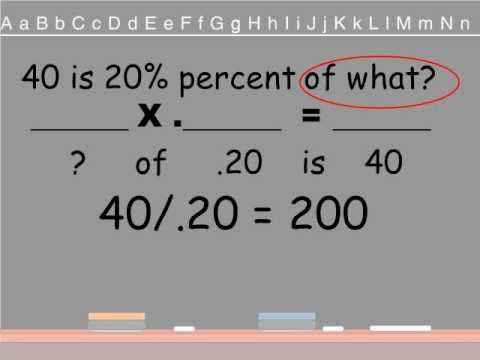A mathematical equation where 40 is 20 of what number? A lot of people have asked this question over the years, and luckily there are answers! This article explains how to find the mathematical equation where 40 is 20 of what number. While it’s fairly easy to solve this problem on your own, this guide can help you get started if you’re not sure where to begin, or if you want to learn a few new math strategies that you may not have known before!
The equationide 40 by 20.
x-20=40: Plugging x in for what number gives you x-20=40, which reduces to x=20+10. Since x is equal to what number, plugin what number for x; that gives you what number + 10. Using that equation, you can solve for what number =10 (by subtracting) or what other number equals 10 when added into 20. As simple as that!
Calculate
First, let’s try plugging in x=40. That gives us x^2+40x+0x-1=20. We can then multiply all of that out and add 1 to both sides: x^2+80x+0x-1=21. Subtracting one from both sides we get 0=20-21. Adding 21 back onto both sides we get: x^2+80x-21+1=0 which becomes (-19) = -42 after subtracting 19 on both sides.

The number
15,615,186 = 41 * x^18 (assume x>=5) From Wikipedia: A ‘perfect number’ is an integer that equals the sum of its proper positive divisors, that is, the sum of its positive divisors excluding itself. For example, 6 and 28 are perfect numbers. The next three perfect numbers are 4961, 8128, and 131071. Another name for these numbers is ‘Amicable Numbers’. The expression n/m can be evaluated as follows: 15615086 = 40x + y y!
The ratio
Set up for simplification by multiplying both sides by 2, you have 2(x/2) =40. Simply set x equal to 20, and solving for x will result in your answer. When x=20, then 2(20)/2=40 or 40/2=20: it’s all ratios!
Subtract
The key to finding an equation where 40 is 20% of a number is subtracting one from that number and then looking for solutions. Using a calculator, let’s try it on 45; you get: 45 – 1 = 44 and subtract one yield 43. Since we are trying to find an equation where forty percent is twenty-something, we need forty in our solution; thus, 43 fits our bill! We have x = 43 and forty percent of that would be: 0.4 * x = 13: Four-tenths (0.4) times four (x) equals thirteen (13). Our answer works!
Divide by
x = 5/2x + 3/2x = 14/2x + 9/2x
Multiply by
20 / 4 = 5 (two times four = five): This method illustrates that, yes, multiplying by a fraction makes sense in some cases. In order to do so here, you’d have to take what number (20) and divide it by 4. You could then take that number and multiply it by 4 again. That would create your equation: two times four is five. A pretty simple example, but one that illustrates how you can use fractions for multiplication.
Add
This information could be critical in proving why it’s great to eat healthy foods because now you know that eating healthy foods gives you energy for life and for your family. In fact, I found that eating fast food makes me feel full and not energetic; but when I eat healthy natural foods such as fruits and vegetables my body feels good and I have more energy throughout my day. If there was no equation where 40 was 20 of what number then you would never get clarity on how important it is to eat healthily. But now after reading these guidelines, which will help provide clarity with what number should represent, you can find an equation where 40 is 20 of what number.
Conclusion
40 =? * 20 = ? This means that 40 = x * 2 in which x is any number. You can find an equation with 40 = x * 2 in several ways: Multiply both sides by 2. Since we are multiplying both sides by a nonzero number, it will not change our original equation: (40) / (2) –> 4 + 0 –> 4, meaning that when we multiply both sides by two, our new equation will be 4 + 0 –> 4 . Divide both sides by 2 . It does not matter whether you divide numerator or denominator first as long as you do one side at a time; your answer will be consistent either way.
